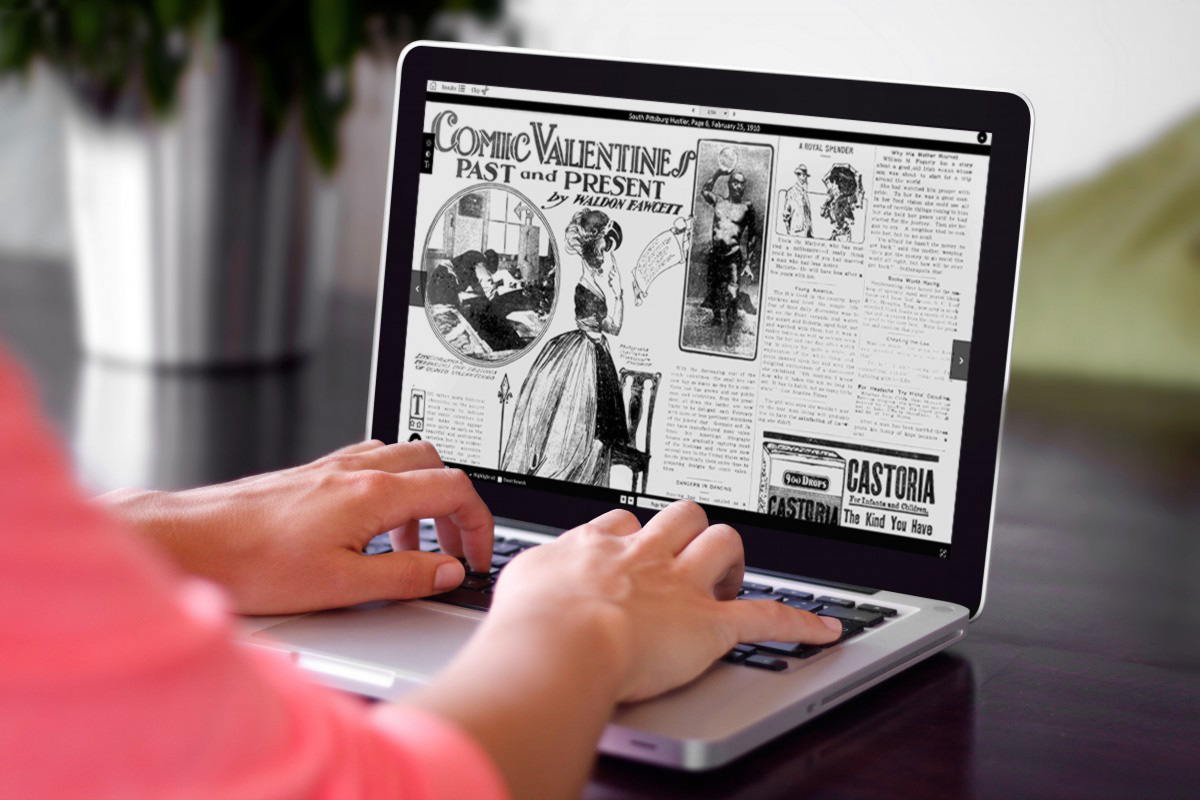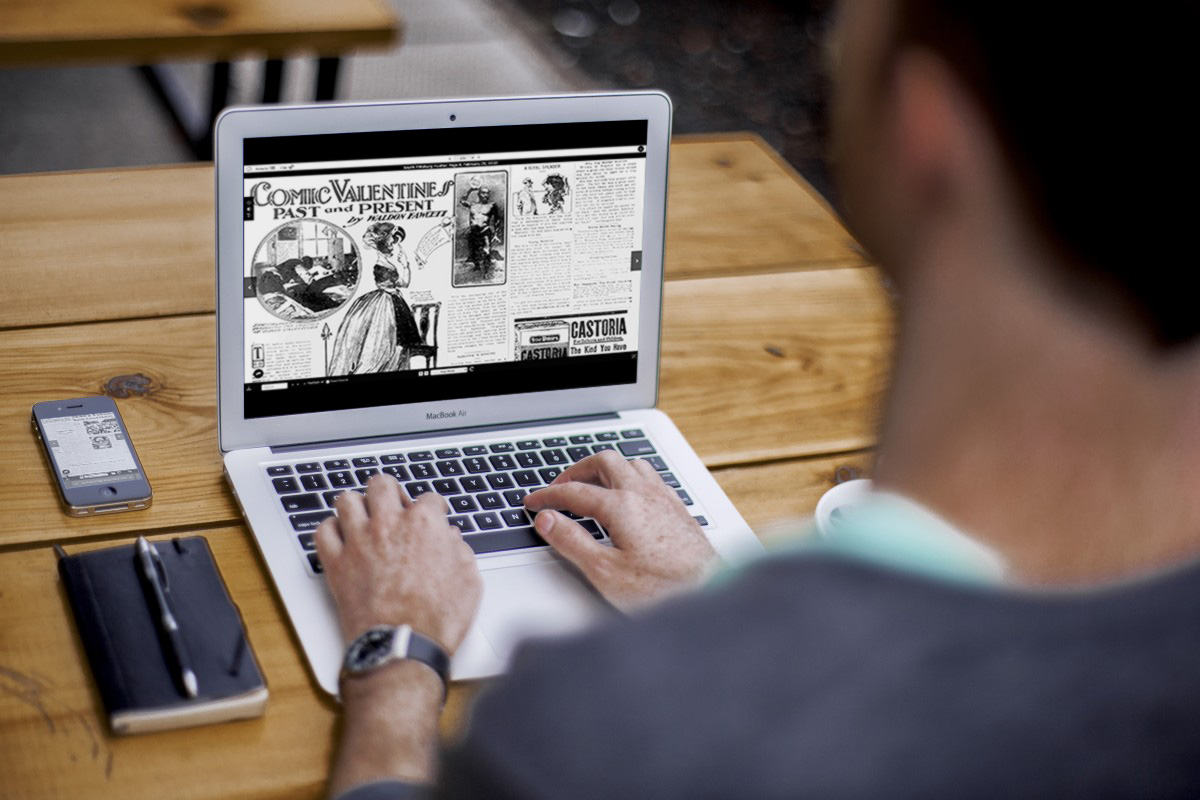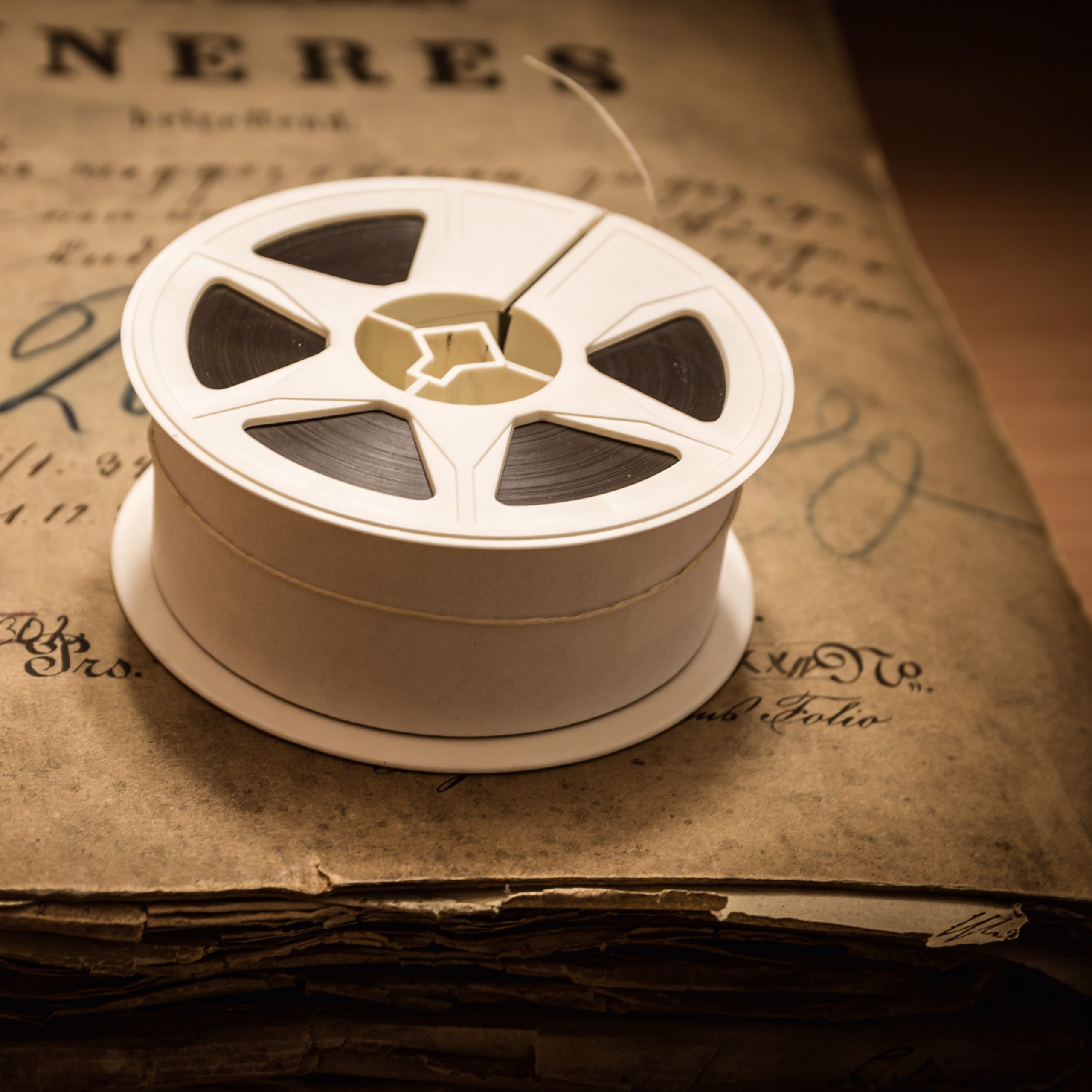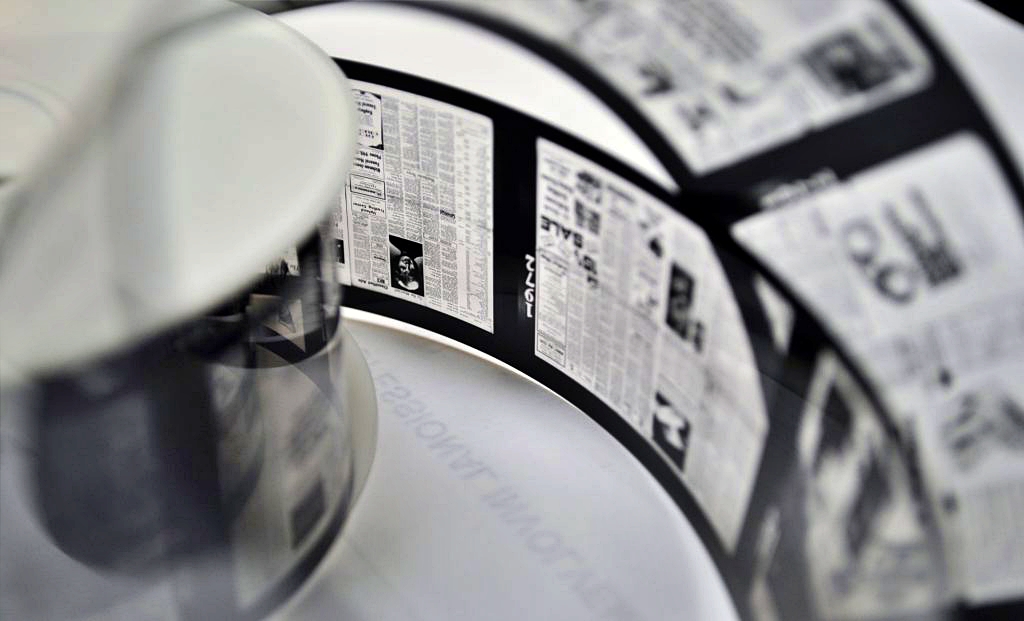
Digital Archive Hosting
Give your historic documents a new life and give your community an easy-to-use resource by converting your local newspaper microfilm to a fully-searchable digital archive. The Community History Archives serve as a practical means to explore and discover content that was not easily accessible before. Preserving the historical content on microfilm ensures that the “first rough draft of history” is available for future generations. Using digitization as a supplement (not a replacement) to your long-term archival strategy opens up a very real way for the members of your community to connect with their history.
The Community History Archive is user-friendly and easy to learn. We focused on making it as simple as possible so that everyone…from students to grandparents (and everyone in between) can browse, search, view, clip, and share articles, headlines, pages, and stories recorded in the pages of the community newspaper. Just type a search and hit “enter” or browse to a specific year, month, day, or page in any (or all) publications contained in the archive. Often a better value than a single microfilm reader! Advantage Preservation has developed a tailor-made solution to meet the preservation needs of libraries across the country.

What We Do
We forge strong and meaningful partnerships with your community to preserve and provide access to your local history. We know that for a partnership to be successful, both parties must shoulder their fair share. This is why we:
- Take the time to understand your institution and the role it plays in the community
- Evaluate your needs and collaborate with you on developing an action plan to digitize the newspapers, microfilm, photos, bound volumes, yearbooks, and other documents of significance to your community.
- Create and maintain a Community History Archive for your community so they can access their local history for free, at any time, from anywhere, on any device.
- Continue to develop and update the platform with new research tools, enhancements, and features that allow your users to explore, discover, clip, share, and connect with the history contained in the digital archive.
Together we will create a valuable asset that you are proud to share with your patrons and community. The Community History Archives are maintained for free by Advantage and do not require a subscription, seat license, annual support contract, or any other ongoing costs or expenses to your institution or members of the community.

Provide Practical Access To Preserved Content
Historical newspapers and documents provide the first draft of our communities history, and they not only need to be preserved but made easily accessible. You might be evaluating the advantages of digitizing this historic content once it is preserved on microfilm. We have received this question asked by library directors many times. The answers vary from community to community to some degree, but in the end, the universal answer boils down to:
It will save time, improve research accuracy, protect the preservation copy, save money on physical replacements, & create a valuable community asset.
The Community History Archives is designed to be powerful but not intimidating. It needs to be friendly, intuitive, and easy to learn. Advantage has focused on making it as simple as possible so that everyone…from students to grandparents (and everyone in between) can browse, search, view, clip, and share articles, headlines, pages, and stories recorded in the pages of the community newspaper. Just type a search and hit “enter” or browse to a specific year, month, day, or page in any (or all) publications contained in the archive.
The platform is intended to serve as a “portal to the past”, allowing those primary source documents to give an accounting of history as told by the individuals that witnessed it. The pages in an archive, when stitched together, tell the story of the people, places, and events that shaped the community.

Why Digitize?
You may have questions regarding the digitization of your microfilm collection. Let us give you some answers!
- A Digital Archive Will Save Time
- It Will Improve The Accuracy Of Research
- It Will Help Preserve The Physical Microfilm
- It Can Protect Your Previous Investment In Microfilm
- It Provides Valuable Patron & Community Service
A Digital Archive Will Save Time
Keyword searching allows library staff and patrons to find information within seconds of typing in a name or search term. Less time spent researching by thumbing through pages of newspapers or microfilm is more time spent assisting patrons & working on other projects or programs for the library.
For example:
- A patron calls the library looking for “John Smith’s” obituary believing “John Smith” passed away between 1910 and 1920.
- The reference staff spends two weeks flipping through one page at a time finding every John Smith that passed between 1910 and 1920.
- The patron calls back and says “I’m sorry, I think it is likely before 1910.”
Three weeks have been lost to researching an obituary. Keyword searching allows phrase searching for every newspaper page containing the phrase “John Smith”. Once that term has been searched, reference staff just has to click through the index, narrowing the results by year. Those years will be filtered by the search term “John Smith” (only the articles containing the term “John Smith” will appear for that year once searched). Three weeks of research via microfilm is now an hour of research on a computer.
Sidney Public Library Director Andrew Sherman sums up the problem:
“We get a lot of requests from people to find information in the old local newspapers we have on microfilm,” said Mr. Sherman, “and the issue we have is, if the person doesn’t have a good idea of the date or a fairly limited date range for us to search, with our staff, it’s just not practical for us.”
Like many of our partners, Bossard Memorial Library director Debbie Saunders also knows the limitations of microfilm at her library in terms of accessibility.
“While it was great that patrons could come in and search the microfilm in-house, it wasn’t searchable in a really efficient way,” said Saunders. “We now have an online searchable index of every paper since 1895…We just believed in the value of it and what it will do for people in terms of their research capability, even if you’re not doing real in-depth research you can learn a lot about local history or family members.”
Melinda Krick, editor of The Paulding Progress agrees:
“So many times we’ve tried to research something, and it’s like trying to find a needle in a haystack unless you had a date to go by. This makes research so much easier and more productive.” BUT…you might WANT to spend a bit more time on your research. “It is easy to get lost browsing through the archives.”
It Will Improve The Accuracy Of Research
Keyword searching & indexing of archives assures staff and patrons find the information they need faster, with far more instances discovered than possible by searching through conventional microfilm with an antiquated microfilm reader.
With a Community History Archive, intuitive searches can find people, phrases, places, and events people can overlook after hours of researching a newspaper page by page. Once your documents, photos, yearbooks, records, bound volumes, or newspaper microfilm is digitized, each newspaper page will be keyword searchable. It is much more efficient than the “old way.”
Without a searchable archive, to locate a name, an event, or anything else of significance, you first need to know a date or a reasonably narrow date range. Once you find the right cabinet, drawer, and finally the reel, containing that date range of the newspaper you were looking for…then the work begins. Thread the microfilm reader…now rethread it correctly, change the lens…then realize the one you initially had is the correct one…then start scrolling.
Then scroll some more.
Keep scrolling.
Scroll a bit longer… until you find the single page you want out of the 900 or more on the reel. Now locate the article. Now find the name, place, or event that started you on this journey in the first place. Then rewind the reel, and put it back, so you can repeat the process for the following item on your list.
Is there any question that things will be overlooked or instances missed? How complete can one’s research be utilizing this method? Wouldn’t it be a lot more convenient to just search for “John Kennedy’s” name and have every instance of it presented to you, to begin with? Then (equally efficiently), have it highlighted on the image if “John Kennedy” appears on that newspaper page? Searching within newspaper pages allows researchers to uncover the information they would otherwise have overlooked.
Toby Schwartzman, public service director for the James V. Brown Library, knows that looking for one particular article or obituary without the exact date it was published is nearly impossible for the individuals using the library’s resource of film.
“You are reading the newspaper very arduously. You have to already know what you are looking for.”
A digital archive allows you to give your historical documents a new life and give your community an easy-to-use resource, by converting your local newspaper microfilm, and other historical documents, to a fully-searchable digital archive. The Community History Archives serve as a practical means to explore and discover content that was not easily accessible before. Preserving the historical content on microfilm ensures that the “first rough draft of history” is available for future generations. Using digitization as a supplement (not a replacement) to your long-term archival strategy opens up a genuine way for the members of your community to connect with their history.
It Will Help Preserve The Physical Microfilm
We stand by our convections: Microfilm is for preservation, digitization is for access. Hard copy newspaper, microfilm, & microfilm readers wear down with every year and every use. Researching digitally is not only a more efficient way of searching, it also helps further preserve the preservation copy from deteriorating over time with use.
Caribou Public Library Director Anastasia Weigle, sums it up well when she says:
“Archivists know it’s not the newspaper that’s valuable, but the content in that paper. We have a number of publications we can’t even bring out of the box because they’re just falling apart.”
Oils from the skin are acidic and can damage film, and compromise newspapers and other original documents. Oil from fingerprints also collects dust, which is abrasive and can cause scratches on your microfilm. If your microfilm readers are not adequately cleaned and maintained, or covered when not in use, it too can be a source of damage. Dust, oils, and particles settle on the glass and become abrasive. Paper is even more fragile and less stable. Humidity, temperature variations, and other environmental factors compound the risk.
Your microfilm or original paper materials will deteriorate from the normal wear of use. Digitization allows for the reels and documents to be handled only by your staff.
It Can Protect Your Previous Investment In Microfilm
Have we mentioned that we think the microfilm reels are a preservation medium? Due to the wear and tear on your microfilm service copies, you will find yourself periodically replacing damaged reels, or losing the content because the replacement costs become too high.
We believe the microfilm should be purchased once and handled as little as possible. The more it is used the higher the chance of scratches, tears, and other forms of deterioration caused by oily fingerprints, contact with the hard (and often unclean) reader surfaces, improper storage, and careless handling. Another thing to consider is how long you will be able to source parts for or find someone to service, the microfilm readers in your institution.
As long as your microfilm remains in the condition in which you purchased it, you will always be able to re-scan or reformat your digital images from the best available source materials. If your film is unable to provide the image quality, you find it acceptable. At that point, you must purchase a duplicate, borrow from an institution that may have a better quality copy, or in extreme cases, pay to re-film from bound volumes or other paper documents if you can locate it.
Nevada Library Director Shanna Speer was fortunate to find better quality film from the State Historical Society of Iowa, stored in the Advantage Archives microfilm storage facility:
“The digitization of the paper for the library will actually be done through the newspaper microfilm negatives that are owned by the State Historical Society, rather than those owned by the library. That’s because the film owned by the State Historical Society has never been used except to make a positive copy of the film. Therefore, there are no scratches or blemishes on the film, so it will allow for the best digital copy.”
However, we work with many libraries across the country that have experienced “expense creep” when it comes to their digitization efforts, due to the costs associated with time spent locating and evaluating copies of microfilm in better shape than theirs or purchasing copies from a vendor. Purchasing replacement duplications of the microfilm is a viable option, however, our position remains…you should only have to replace at-risk film suffering from vinegar syndrome or redox. All other factors can and should be mitigated by limited handling and proper storage.
It Provides Valuable Patron & Community Service
The most important reason your institution should consider a digital Community History Archive created from your existing microfilm collection may be the most obvious: To provide a valuable service that meets or exceeds its patron’s & community members’ needs.
The faster you can find the information they need, the more you and your staff can be devoted to other projects, allowing for those resources to be directed towards other meaningful projects.
Libraries are at the heart of your community and serve as an essential component of collecting, preserving, and providing access to information and engaging the community. There is no better way to accomplish that than offering innovative services and creating tangible ways to learn, connect, and facilitate a culture of discovery. The Community History Archives help facilitate these objectives and likely align with your institution’s guiding principles and mission statement.
Ryan Gjerde, Luther College Preus Library director, recognizes the vehicle that their new Community History Archive can serve in the library’s outreach efforts.
“We are excited that this project will unlock a significant source of local history for casual and serious researchers and genealogists, and perhaps even students in local schools…we look forward to reaching out to local groups who might be interested in training on how to use the collection.”






